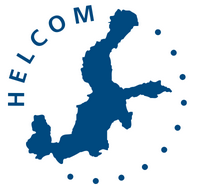Experts on the maritime Automatic Identification System () technology from Baltic coastal countries and Norway met today and yesterday to consider the mutual exchange and deliveries of AIS signals and resulting data. The 26th meeting of the group was chaired by Omar Eriksson from Denmark and hosted by the Maritime Office in Gdynia, Poland. The HELCOM AIS system provides almost real time information on the position and characteristics of all the larger ships in the entire Baltic Sea area which is freely shared among all coastal countries and Norway. The data exchange celebrates its ten-year anniversary this year as the system has been on-line since the summer of 2005. The statistics are available at HELCOM . The historic data is stored and available for further study by national authorities, researchers and other interested users. AIS enables for example monitoring of the environmental risks of maritime traffic, including historic trends of shipping. The decision to create a regional AIS network was taken at the HELCOM Meeting of Ministers of Transport of the Baltic Sea region in September 2001. The underlying reasons were the IMO decision to make the technology mandatory, as well as early work on ship reporting in the region during 1970s and 1980s. Access to the regional HELCOM AIS data generated by the system is currently available to a wide range of actors either automatically, or, in some cases, after an explicit consultation. The recent surge of maritime developments in the form of wind-power farms, pipelines and cables have increased the interest in this information. AIS information has during the last ten years highlighted the need for new high priority areas for bathymetric re-surveys, new charts – especially Electronic Navigational Charts – as well as other safety of navigation measures such as IMO routeing. AIS technology as a whole continues to develop and the information is the backbone of many modern navigation applications.* * *To access data products about shipping traffic in the Baltic Sea, please enter HELCOM thematic Maritime & Response , under Maritime & Response -> Maritime traffic statistics. The folder includes e.g. Baltic-wide HELCOM AIS average shipping density raster map and AIS passage line crossing statistics from 2006 onwards. >> All documents will be public soon.* * *Note for editors – Since 2005, the Baltic region has had a system in place for gathering signals from all the Automatic Identification System (AIS) devices on ships – the HELCOM AIS network. This network provides real-time surveillance and statistics of the movement of ships, and is administered by the HELCOM AIS Working Group, meeting annually since 2002. E-navigation uses such information to create a second generation of electronic services for enhanced safety and environmental performance. The Baltic Marine Environment Protection Commission, usually referred to as , is an intergovernmental organization of the nine Baltic Sea coastal countries and the European Union working to protect the marine environment of the Baltic Sea from all sources of pollution and to ensure safety of navigation in the region. Since 1974, HELCOM has been the governing body of the ‘Convention on the Protection of the Marine Environment of the Baltic Sea Area’, more commonly known as the Helsinki Convention. * * * For more information, please contact:Hermanni BackerProfessional Secretary for Maritime, Response and Maritime Spatial PlanningHELCOMTel: +358 46 8509199Skype: helcom02E-mail: hermanni.backer(at)helcom.fi Johanna LaurilaInformation SecretaryHELCOMTel: +358 40 523 8988Skype: helcom70E-mail: johanna.laurila(at)helcom.fi
The HELCOM AIS system, online since 2005, provides almost real time information on the position and characteristics of all the larger ships in the entire Baltic Sea.
